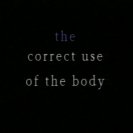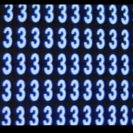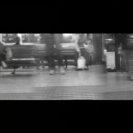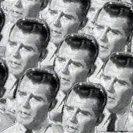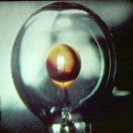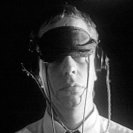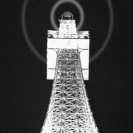The work of Ian Andrews crosses the boundaries between video and filmmaking to create a hybrid media art. Since the late 1980s his work has had an abiding fascination with the synaesthetic relationships between sound and image. His work has often explored the notion that people, despite expressions of their individual will and desire, can also be regarded as depersonalized units within bigger social systems such as armies, mobs and demographic markets. Andrews suggests that, despite these mass groupings, the viewer might be liberated from conditioned responses through a series of transgressive gestures – anti-narrative, non linear, repetitive and highly associative sequences of images that defy simple generic categorisation.
The Harm Machine [1991] is a film of dense montages of found footage capturing faces in fierce arguments or modest scientific explication, juxtaposed with stock footage of nuclear tests and iconic moments lifted from classic science fiction films This Island Earth [1955] and The Man with the X-Ray Eyes, [1963]. Andrews’ film abounds in the imagery of the Cold War and the imperial absurdities of American consumer culture, its unifying theme the notion that the world is constructed from the shadows of objects that no longer exist.
Throughout the 1990s Andrews explored the various effects of sound and image montage using a mix of found and original footage. Phonogramm [1992] was an ecstatic collection of spinning globes, records and ice skaters while Programme [1993] used found footage of marching bands and boys engaged in calisthenics set to marshal music to investigate conditioning and propaganda. By the turn of the next decade Andrews work had become markedly simpler.
Since 2006 Andrews has created works using imagery shot using a lightweight and portable video camera. The Trans-iterations series imposes a structural analysis on original footage: Platform #19 [2006] records the passing of a railway station platform recorded on three separate occasions. Using video technology to stitch the three shots together, the video is structured around a series of permutations of each shot, subtly growing and expanding as each pass of the platform is shown. Andrews investigated different locations for further works in the series including Sydney harbour in Flotsam [2006] and the escalators of a train station in Bardo [2007]. His most complex work in the series is Park [2007] which presents a seemingly simple shot of a pathway in a park with perambulating tourists, but which slowly reveals itself to be a subtle collage of different shots recorded at different times.
Selected solo/group exhibitions: Dart06 Sydney, Newcastle Regional Gallery, Newcastle, SynCity, Australian Centre for Photography, Sydney, 2006. FILE festival, Sao Paulo; ISEA2004, Kiasma, Helsinki; Espace, Beirut, 2004. Transfigure, Australian Centre for the Moving Image, Melbourne; New Forms Festival, Vancouver, Canada, Periscope, Adelaide International Film Festival; oZone: Australian Digital Media Art, Pompidou Centre, Paris, 2003. Soundtoys – Cybersonica, ICA London, Den Hague Film Festival, Zeppelin Barcelona, Garage, Stalsund Germany; Art and the Arts: New Media Poetry, Rome; Plasmatic, MAAP2002, Beijing, 2002. Contagion, Wellington NZ; SideShow, Melbourne International Film Festival, Electro-matic: film and video retrospective, dLux, Sydney Film Festival, 2001.
Selected publications: Peripatetic Media: Ian Andrews and the Philosophers Video, Electro-matic, catalogue, 2001. Departure, Transfigure exhibition online catalogue, www.acmi.net.au.








